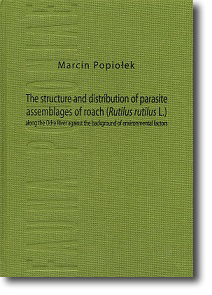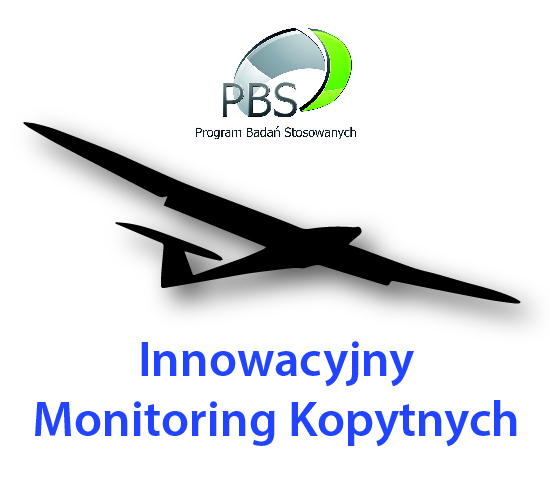The Ants (Hymenoptera, Formicidae) of Poland
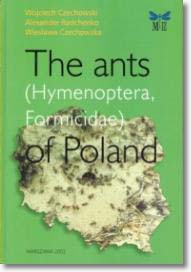 |
by Wojciech Czechowski, Alexander Radchenko and Wiesława Czechowska The Ants (Hymenoptera, Formicidae)of Poland is a monographic study of 98 ant species known from Poland. The book comprises three sections. The first is a catalogue of the Polish ants which provides a systematic review of the species together with information about their geographical ranges, occurrence in Poland and biology. This section cites all faunistic literature data up to the year 2000. The second section characterises the myrmecofauna of Poland, including its species, zoogeographical and ecological compositions. The third section consists of keys for identification of the Polish ant taxa.The book contains 200 pages, 6 tables, 101 figures (maps of ranges and distribution of species) and 20 plates of morphological drawings. Hard cover.The authors are members of the Department of Social Insects and Myrmecophiles of the Museum and Institute of Zoology of the Polish Academy of Sciences in Warsaw. |
The book is out of print.
Fauna Polski - Nowa seria - vol. 5 - The structure and distribution of parasite assemblages of roach (Rutilus rutilus L.)
|
|
Marcin Popiołek The structure and distribution of parasite assemblages of roach (Rutilus rutilus L.)
Museum and Institute of Zoology of the Polish Academy of Sciences Warszawa 2012 175 x 245 mm, 295 pages, twarda okładka, ISBN 978-83-930773-6-6 ISSN 0303-4909 |
Price: 60 euro + 5% VAT + postage
Orders:
Please contact our orders department Ten adres pocztowy jest chroniony przed spamowaniem. Aby go zobaczyć, konieczne jest włączenie w przeglądarce obsługi JavaScript., or use online form (secure HTTPS connection)
Celem badań było wykazanie wielokierunkowego wpływu czynników środowiskowych (naturalnych i antropogennych) na rozmieszczenie oraz strukturę zgrupowań pasożytów płoci (Rutilus rutilus L.) wzdłuż biegu Odry. Analizowane czynniki podzielono na dwie grupy. Do czynników środowiskowych zaliczono: (1) charakter rzeki, (2) poziom uprzemysłowienia terenów przy-ległych, (3) obecność lub brak sztucznych przegród w korycie rzeki, (4) obecność lub brak gospodarstw rybackich, (5) bogactwo ostoi ptaków wodno-błotnych w sąsiedztwie rzeki oraz (5) szybkość nurtu. Wśród czynników fizyko-chemicznych wyróżniono grupy parametrów charakteryzujących: (1) warunki fizyczne i termiczne wody, (2) warunki tlenowe i zanieczyszczenia organiczne, (3) zasolenie, (4) zakwaszenie oraz (5) warunki biogenne. Na siedmiu stanowiskach zlokalizowanych wzdłuż całego, mierzącego 854 km, biegu Odry odłowiono łącznie 451 płoci, które poddano pełnym sekcjom parazytologicznym.
Słowa kluczowe: Pasożyty, Rutilus rutilus, płoć, Odra, zgrupowania pasożytów, czynniki środowiskowe, Polska.
Fauna Polski - Nowa seria - vol. 4 - The ants of Poland with reference to the myrmecofauna of Europe
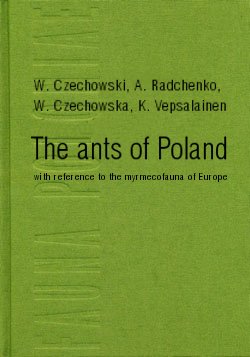 |
Wojciech Czechowski, Alexander Radchenko, Wiesława Czechowska, Kari Vepsäläinen The ants of Poland with reference to the myrmecofauna of Europe
Museum and Institute of Zoology of the Polish Academy of Sciences Warszawa 2012 173 x 243 mm, hardcover, 496 pages, 201 maps, 55 plates with several hundred SEM photographs of morphological details, 33 figures with drawings, 13 tables. ISBN 978-83-930773-4-2 |
Price: 95 € + 5% VAT + postage
Special Offer (save up to 70%)
Orders:
Please contact our orders department Ten adres pocztowy jest chroniony przed spamowaniem. Aby go zobaczyć, konieczne jest włączenie w przeglądarce obsługi JavaScript., or use online form (secure HTTPS connection)
This book on ants (Hymenoptera: Formicidae) is an updated, corrected and expanded version of the previous monograph of the Polish myrmecofauna (Czechowski et al. 2002). It contains 103 ant species of 25 genera reported in Poland until 2010, the occurrence of which in the country are unquestionable or at least considered by the authors probable. The book consists of four main chapters: (1) a systematic checklist of the ant taxa (subfamilies, genera, species) of Europe, (2) a faunistic catalogue of the ants of Poland, (3) characteristics of the myrmecofauna of Poland, and (4) keys for identification. The checklist is the newest updated list of the European ants, and it displays recent alterations in the ant taxonomy. It contains nine subfamilies, 57 genera and 613 valid species; the list is complemented by 10 recognised but not yet formally described species. The faunistic catalogue provides a taxonomic survey of the Polish ant species together with information about their general distribution in the Palaearctic and the distribution in Poland, with notes on the biology of each species. For some taxa (species, genera), notes on their taxonomic history are provided. The chapter compiles all faunistic data published until the end of the year 2010; published reports are supplemented by confirmed unpublished data available to the authors. For every species maps of their ranges in the Palaearctic and distributions in the geographical regions in Poland are enclosed. The catalogue is closed by a list of the species ever reported in Poland and later owing to a specified reason excluded from the Polish fauna. The next chapter includes zoogeographical and ecological characteristics of the Polish myrmecofauna, with reference to the European myrmecofauna as a whole. The last chapter includes keys for identification of the ant taxa (subfamilies, genera and species), individually for workers, queens and males (when distinguishable). The keys for subfamilies and genera involve all European taxa of these ranks. The keys for species include all ant species known in Poland, and those not reported from Poland but present in adjacent regions of Central Europe, and recognised as possible to be found in the country. The keys are illustrated with SEM photographs. The main chapters are preceded by the foreword presenting general trends in myrmecological research in the world throughout history, and the introduction, in which the past and the present of Polish myrmecology is outlined.
Key words: Ants, biology, checklist, ecology, Europe, faunistics, key, morphology, Poland, systematics, taxonomy, zoogeography.
Fauna Polski - Nowa seria - vol. 3 - Ptyctimous mites of Poland
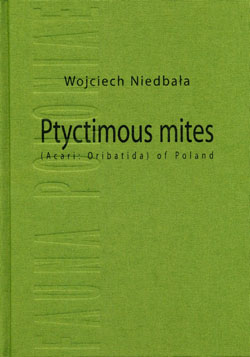 |
Wojciech Niedbała Ptyctimous mites (Acari, Oribatida) of Poland Museum and Institute of Zoology of the Polish Academy of Sciences Warszawa 2008 ca 173 x 243 mm, 242 pages, 42 plates, 35 tables, hardcover ISBN 978-83-918040-6-3 |
Cena: 55 zł + koszt przesyłki
Orders:
Please contact our orders department, or use online form (secure HTTPS connection)
A monograph of the ptyctimous mites (Acari, Oribatida) of Poland, typical xylophagous soil mites, has been prepared on the basis of 22 654 individuals found in 869 samples. A detailed analysis of morphology of representatives of ptychoid groups has been provided. The species occurring in Poland have been classified into two cohorts of Arthroptyctima and Euptyctima, two superfamilies Phthiracaroidea and Euphthiracaroidea, 5 families: Mesoplophoridae, Oribotritiidae, Euphthiracaridae, Phthiracaridae and Steganacaridae, and 12 genera. Diagnoses of higher taxa have been followed by a review of the species. At present the number of species known from Poland is 40. Compared to the previous studies, the number of species known from Poland was enriched by 20, including six species new to the science. Each species is illustrated and characteristics of morphology as well as metric data are provided; synonyms are listed under specific names. Keys for identification of the species and higher taxa are given.
Key words: Acari, Oribatida, ptyctimous mites, systematic, ecology, Poland






